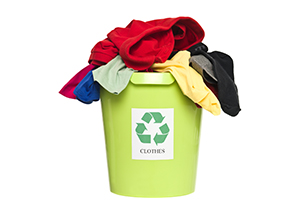
Turning old clothes into everything new
YarnsandFibers News Bureau 2019-05-28 13:10:00 – AustraliaAustralia has a fashion problem. More than 500,000 tonnes of clothing waste is sent to landfill each year. But a new way of recycling could redirect some of our unwanted textiles from polluting the environment, by repurposing cotton waste into anything from new clothes to prosthetic knees.
Developed by our team at Deakin University, where we work on designing materials and processes for a circular economy, this solution for recycling textiles involves dissolving cotton and regenerating it into brand-new cellulose – a complex, strong carbohydrate with many industrial uses.
With the textile industry generating so much waste, the only way to keep up with the demands set by fashion trends and the wear and tear of our clothes is to make the industry sustainable.
The cost of clothes
Textile waste consumes nearly 5% of all landfill space, and 20% of all freshwater pollution is a result of textile treatment and dyeing. Growing cotton requires harmful pesticides and fertilisers, and textile-manufacturing plants release hazardous waste into the nearby land.
Synthetic dyes also come at a cost to the environment. The dyeing process involves a lot of water, and not all of it is efficiently cleaned before re-entering our environment.
Waste water from textile dyeing can affect the entire water ecosystem. This is because some dyes don’t ever degrade in water. Those that do degrade produce harmful byproducts – sometimes carcinogenic.
Importantly, despite the energy and resources used in the production process, not all cotton produced makes it into our clothes. Around 23.6 million tonnes of cotton is produced each year, but the weight of stems, leaves and lint from the plant amounts to 18-65% of each bale of cotton.
From what is left, even more cotton fibre is lost in the process of spinning cotton buds into yarn because some fibres break during spinning. Some of this raw material waste can be used to make products such as soaps, animal feed or cotton seed oil, but the rest is thrown away.
Wasted raw cotton material aside, it can take nearly 2,700 litres of water to produce a single cotton T-shirt and more than 7,600 litres to make a pair of jeans.
It’s no wonder that we want greener clothes!
How we’re closing the cotton circle
To counter the fast-fashion industry, circular fashion is taking off. Textile waste can now be recycled into usable products.
Cotton fibres are almost purely comprised of cellulose and can therefore be turned into other cellulose-based products.
At Deakin University’s Institute for Frontier Materials we have developed a chemical-based recycling process to produce high-quality, regenerated cellulose from cotton.
The regenerated cellulose can be used in many ways. It can be used in textile manufacturing again, in the production of cellophane and paper, insulation and filtration, or in biomedical applications such as drug delivery and tissue engineering.
Cotton waste has traditionally been recycled through a mechanical process that produces poorer-quality recycled cotton. Only a small fraction of recycled cotton could be incorporated into new garments.
But our recycling process dissolves the cotton waste and regenerates it as cellulose. Even cotton-blended fabrics, such as cotton-polyester blends, can be recycled in this process, so nothing goes to waste.
This regenerated cellulose has many different possible uses. It can be spun into a textile fibre similar to native cotton or used to make aerogels – synthetic, ultralight materials comprised of a network of micron-sized pores and nanoscale tunnels.
The aerogels produced from our recycling process can be moulded into a structure almost identical to cartilage in the joints of the body. We manipulate the size and distribution of tunnels to mould the aerogel within into synthetic cartilage with an ideal shape to replace damaged knee cartilage in arthritic patients.
While we haven’t used them in patients yet, we’ve found that the aerogels have a remarkable similarity to cartilage tissues when tested. They can replicate the type of lubrication mechanism used by cartilage in joints to protect against wear and damage.
Rescuing dyes
We can also shred cotton fabrics and mill them into coloured powders to dye new clothes. Since 2017, many Chinese factories that produced synthetic dyes for textiles were shut down following environmental inspections, highlighting the need for change in dyeing practices.
We need new textile dyeing methods that save water, reduce pollutants, save energy and protect human health.
Our recycling process offers an environmentally friendly alternative. This process not only gives purpose to old clothing, but also eliminates much of the energy and water involved in the normal dyeing process.
We are rescuing denim and other cotton-based clothes from landfill to create cellulose fibres, aerogels and dyes from 100% of the waste.
Courtesy: The Conversation
Market Intelligence
Ask for free sample Report

experience
Customer Base
dedicated team
Countries Served Worldwide









